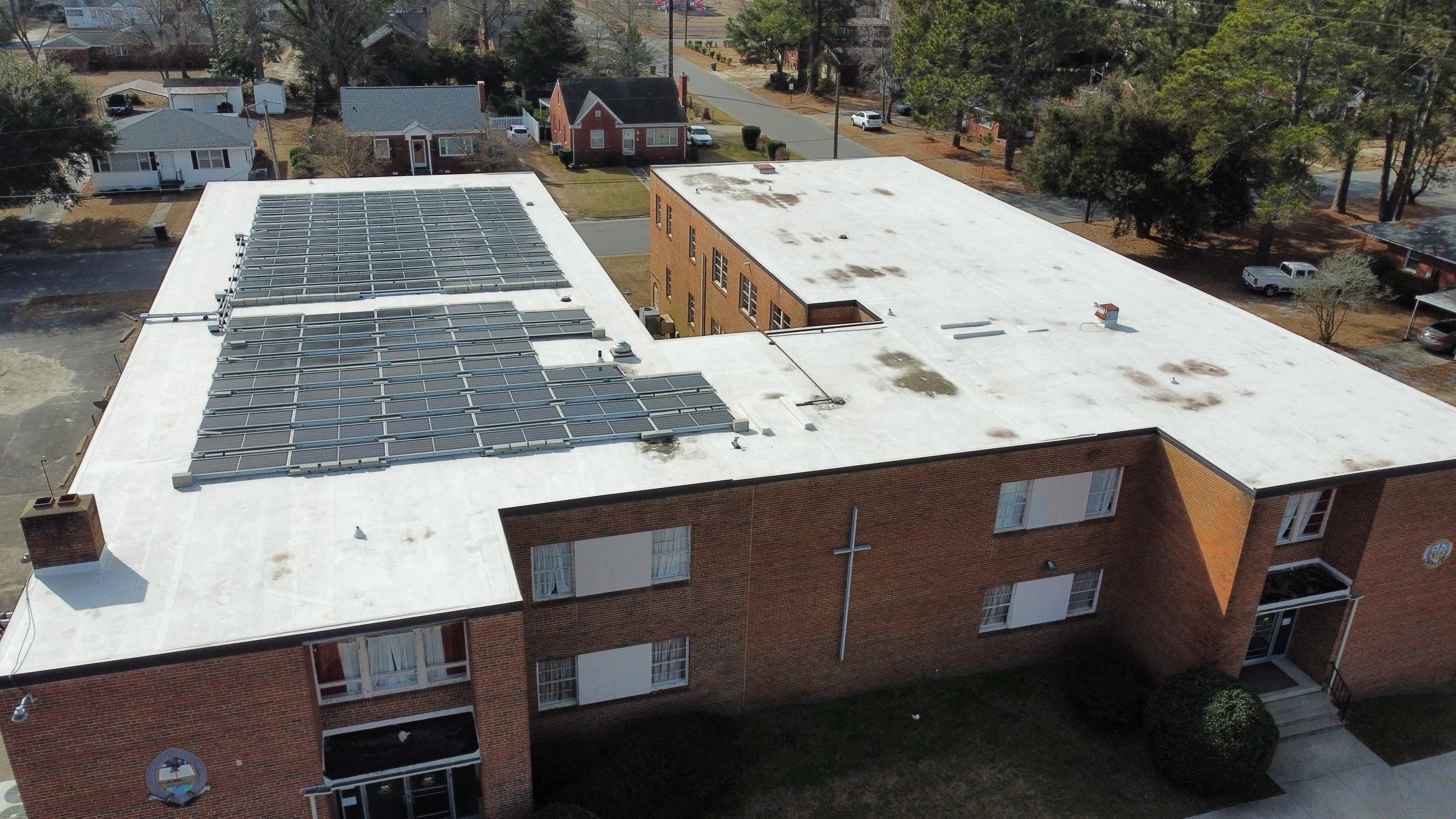51. Navigating the low-carbon economy: Insights from ceres
Our 50 kW solar project at Tehillah Church Ministries in Goldsboro, NC.
The transition to a low-carbon economy presents unparalleled opportunities for banks worldwide. In their recent report, "Sustainable Finance Opportunities: A Guide for Financial Institutions," Ceres outlines essential strategies for navigating this transformative landscape.
Source: Ceres
In 2022 alone, banks amassed $3.3 billion in fees from $580 billion of green financing, eclipsing earnings from fossil fuel financing. Achieving net zero emissions by 2050 demands substantial investments – estimated at $275 trillion – offering a promising horizon for banks. In this report, Ceres introduces the ”Low-Carbon Economy Transition Opportunity Ladder,” which offers guidance to help banks, credit unions, and minority depository institutions fully capitalize on this commercial opportunity. Below, we capture key courses of action Ceres suggests for each step of the ladder.
Priming a Bank’s Organization for the Transition: Leveraging existing strengths, banks can expand products and services, such as adding renewable power generation borrowers to existing portfolios.
Engaging with Clients with New Products and Services: Financing climate solutions through green bonds and sustainability-oriented projects is crucial. Legislation like the U.S. Inflation Reduction Act offers transformational opportunities, unlocking new commercial financing avenues such solar, wind, and geothermal power generation, energy storage, building energy efficiency, electrification, and carbon removal technologies.
Deploying the Bank’s Transition Strategy: Engaging legacy borrowers in high greenhouse gas emitting industries and implementing diversification-based decarbonization strategies can reduce emissions.
Optimizing the Bank for the Low-Carbon Economy: As climate solutions financing drives revenue growth, banks can focus on generating better climate-risk adjusted borrower returns and enhancing policy engagement.
The shift to a low-carbon economy marks a crucial move towards sustainability. In their report, Ceres emphasizes that financial institutions can thrive by embracing innovation and collaboration. As a developer and financier of community-based commercial solar projects, Sunwealth stands ready to assist financial institutions in capitalizing on commercial solar financing opportunities via solar tax equity and or construction/permanent financing strategies. Most recently, we partnered with BankFive to develop a $2 million portfolio of community-based commercial solar projects across the Northeast and California — learn more here.
Together, let’s pave the way towards a greener, more prosperous future for all.


